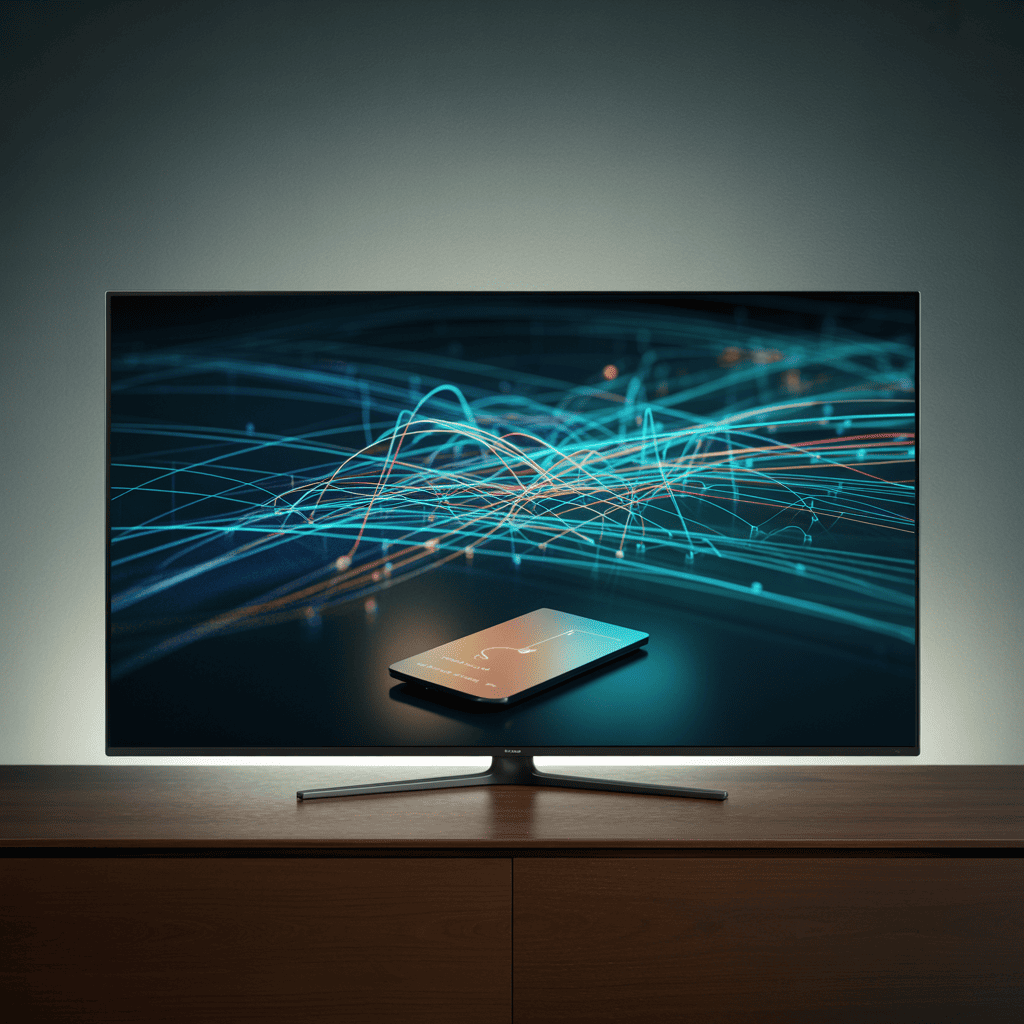Audio is having a moment. From podcasts that captivate millions to streaming services that soundtrack our daily lives, sound has become one of the most intimate and engaging ways brands can connect with audiences. Audio advertising isn't just growing—it's fundamentally changing how marketers reach people in their most focused, receptive moments.
For brands across Europe—from Estonia's innovative startups to established companies throughout the Baltics and Nordics—audio represents an opportunity to reach audiences in unique contexts: during commutes, workouts, cooking, working from home. These are moments when people are actively engaged with content, making them ideal for meaningful brand connections.
Why Audio Advertising Works So Well
Audio creates a fundamentally different relationship between brand and consumer than visual advertising. When people listen to content through headphones or personal devices, your message literally gets inside their heads. This intimacy creates powerful opportunities for connection that other channels struggle to match.
Think about the listening contexts: someone running while streaming music, a professional listening to industry podcasts during their commute, a parent cooking dinner with smart speakers playing their favorite shows. These are moments of focused attention where listeners are actively engaged with content rather than passively scrolling. Your message reaches them when they're actually paying attention—something increasingly rare in our distraction-filled digital world.
The Podcast Revolution
Podcasts have transformed from niche hobby to mainstream media phenomenon. Millions of people now regularly listen to podcast content across virtually every topic imaginable—from true crime to business strategy, from comedy to personal development. This explosion of content consumption has created remarkable opportunities for advertisers willing to engage with the medium thoughtfully.
What makes podcast advertising particularly powerful is listener loyalty. People don't just casually encounter podcasts—they actively choose shows, subscribe, and return episode after episode. They develop real relationships with hosts, trusting their recommendations and perspectives. When a trusted podcast host talks about your brand, it carries weight that standard advertising simply can't match.
"Audio advertising succeeds because it meets people in moments of genuine engagement—when they're actively choosing to listen rather than passively encountering content. This attention and intent makes all the difference in how messages land and resonate."
Streaming Music: Reaching People in Their Flow
Streaming music services have become the soundtrack to daily life for hundreds of millions of people worldwide. Whether it's Spotify during the workday, Apple Music at the gym, or regional services featuring local artists, people are spending hours daily with streaming audio. This creates massive opportunities to reach audiences in natural, non-disruptive ways.
The key is respecting the listening experience. Audio ads in streaming services work best when they feel like a natural break in content rather than an intrusion. Think of them like radio ads, but smarter—targeted to specific audiences, times of day, and even moods or activities. Someone working out hears different ads than someone relaxing at home, even if they're both on the same platform.
What Makes Streaming Audio Effective
- Massive Reach: Access to millions of active listeners who spend substantial time on platforms every day.
- Contextual Relevance: Match messages to what people are doing—working, exercising, relaxing—for better resonance.
- Minimal Distraction: Listeners are focused on audio content, not multitasking across multiple screens.
- Frequency Control: Smart delivery ensures the same people don't hear your ads too often, preventing listener fatigue.
- Performance Tracking: Detailed analytics show how many people heard your message and what they did afterward.
Smart Speakers and Voice-Activated Devices
Smart speakers have quietly become fixtures in millions of homes across Europe. Whether it's asking for weather updates, playing music, setting timers, or controlling smart home devices, these voice-activated assistants have integrated into daily routines. This creates new touchpoints for audio advertising that didn't exist just a few years ago.
The opportunity with smart speakers isn't just about playing ads—it's about being helpful in moments when people are seeking information or entertainment. Someone asking their smart speaker for cooking tips might appreciate hearing about kitchen products. Someone requesting news briefings could be interested in relevant services. The key is relevance and timing, not interruption.
Creating Audio Content That Connects
Audio advertising requires a different creative approach than visual media. You're working with voice, sound effects, and music rather than images and text. This isn't a limitation—it's an opportunity to engage imagination and emotion in unique ways. Great audio creative paints pictures in listeners' minds, tells compelling stories, and creates memorable experiences.
The best audio ads sound natural, like conversations rather than sales pitches. They respect the listening experience by being brief, clear, and engaging. They use sound strategically—whether that's music that sets a mood, voice talent that connects with target audiences, or sound design that captures attention without being jarring. And critically, they deliver messages that make sense in audio contexts rather than just reading visual scripts aloud.
Targeting the Right Listeners
Modern audio advertising platforms offer sophisticated targeting that ensures your messages reach relevant audiences. You can target by demographics like age, location, and interests, by listening behaviors and content preferences, by time of day or day of week, by device type and listening environment, and even by combinations of these factors to define precise audience segments.
This targeting capability means you're not just buying audio impressions—you're reaching specific people likely to be interested in your products or services. A local business can focus on listeners in specific cities or neighborhoods. A B2B company can target professionals listening to business content. A fitness brand can reach people during workout times. The precision available in audio advertising now rivals what digital marketers expect from other channels.
Measuring What Matters
Audio advertising has evolved far beyond the vague metrics of traditional radio. Modern platforms provide detailed analytics showing exactly how campaigns perform: how many people heard your ads, how many listened all the way through, what actions people took afterward, and how audio campaigns contribute to broader marketing goals.
Attribution tracking connects audio ad exposure to website visits, searches for your brand, and even purchases. This closed-loop measurement enables you to understand ROI and optimize campaigns based on actual business impact rather than just impressions. You can see which creative variations perform best, which audiences respond most strongly, and which contexts drive the highest engagement.
The Growing Opportunity in Europe
European markets, particularly the Baltics and Nordics, present exceptional opportunities for audio advertising. These regions combine high smartphone penetration, strong podcast adoption, widespread streaming service usage, and tech-savvy audiences comfortable with digital audio. Language diversity enables localized messaging that resonates deeply with specific markets—whether that's Estonian, Latvian, Lithuanian, Swedish, Norwegian, Finnish, or other languages.
Local and regional audio content is flourishing alongside international platforms, creating diverse inventory options. Audiences in these markets are sophisticated digital consumers who appreciate relevant, respectful advertising that adds value rather than interrupts experiences. This creates ideal conditions for brands willing to invest in quality audio marketing.
Getting Started With Audio
Launching audio advertising doesn't require massive budgets or complex production. Start by identifying which audio platforms your target audiences use most—podcasts, streaming music, digital radio, or combinations of these. Develop audio creative that works in listening contexts, remembering that you're creating sound-only experiences. Test different approaches and messages to learn what resonates with your audiences.
Consider starting with focused campaigns on specific platforms or podcast categories relevant to your brand. Measure results carefully, learning what drives engagement and business outcomes. As you gain experience and insights, expand to additional platforms and audiences. The brands seeing the best results treat audio as a strategic channel deserving of thoughtful creative and ongoing optimization, not just an afterthought or experiment.
Key Takeaways
- Audio advertising creates intimate connections with engaged audiences during focused, attentive moments throughout their day.
- Podcasts, streaming music, and smart devices offer diverse opportunities to reach listeners in relevant contexts with targeted messages.
- Effective audio creative sounds natural and conversational, engaging imagination while respecting the listening experience.
- Modern tracking and analytics enable detailed measurement of audio campaign performance and clear attribution to business outcomes.




